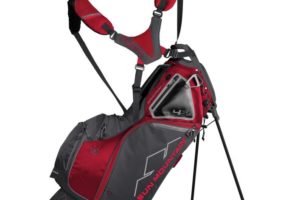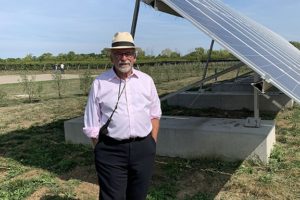Barry Forth only had a minute to chat when I called him yesterday morning. His fairways and clubhouse were a veritable ghost town, but he was too busy.
Too busy? Seriously?
Seriously! The general manager of Copetown Woods Golf Club, a semi-private facility just west of Hamilton, was one of two employees manning the phones, which were ringing off the hook to take advantage of the club’s takeout offers this coming weekend.
“Our Easter dinner is blowing up!” he said. “It’s a full dinner—all hot items with foil trays and reheating instructions. Ham, turkey, mashed potatoes, mac & cheese, veggies, biscuits, bread, salad—$27.50 + tax each. Curbside pick-up just outside the clubhouse.”
By the end of the day, all 700 orders were spoken for. “We also sold out of our Good Friday Fish & Chips—almost 100 orders there.”
When you can’t legally host any golfers, it’s certainly nice for Ontario course operators to be busy in some respect.
But not everyone is playing by the same rules throughout Canada. I received the PGA of B.C. newsletter yesterday. The headlines included a spotlight on a sponsor, a voting notice for the board of directors, a survey regarding the PGA of Canada’s national championships, members on the move, career opportunities, a “Fact of the Week” and an update on holiday operation hours. In that latter section there was a note about the PGA of BC office being closed until further notice because of COVID-19. That was the only mention of the pandemic in the newsletter.
At a time when it feels like we’re fighting the beast in the east, it seems like the wild west in British Columbia. For example, all three of West Coast Golf Group’s courses, including Swaneset Bay Resort & CC, are open for business. They admittedly have a protocol in place to protect customers and employees alike. Tee sheet capacity has been reduced to create more physical distancing. They have suspended food & beverage operations and put self-imposed limits on the number of guests allowed in their golf shops at a given time. Further, there are no power carts available, hole cups are only one inch deep so the flagstick need not be touched, bunker rakes and ball washers have been removed (you can move your ball in the bunker as required), and sand/seed bottles are not in use. A little surprisingly, perhaps, driving ranges remain open.
The West Coast Golf Group’s COVID-19 Operations Update states that its “first priority continues to be the health and safety of our guests and staff. Since the onset of the global COVID-19 outbreak, we have closely monitored the situation and kept up with the current recommendations from The World Health Organization, Health Canada, the BC Centre for Disease Control & Fraser Health. In addition to staff training, we have expanded the already thorough cleaning and sanitizing procedures in place at all of our sites.”
Some facilities in Kamloops, B.C. were back in operation yesterday, reported Kamloops This Week. Eagle Point Golf Resort, which had previously been playable for members only, opened to the general public on Tuesday. Bighorn G&CC and Kamloops G&CC are also open, and “the Dunes at Kamloops and Rivershore Golf Links never closed after their initial opening days and remain playable for the general public.”
Tobiano Golf Course, for its part, is watching and waiting for the moment.
FIGHTING THE LAWS OF THE LAND
South of the border, things are getting a tad litigious, with lawsuits springing up against state governors. Observed the New York Times in an April 3 piece: “Some of those suing their state governments seek redress for specific, local grievances, as with the (Blueberry Hill) golf course (in Pennsylvania). Those lawsuits and one in Arizona are rooted in the Fifth Amendment, which requires due process and guarantees compensation for property seized by the government.”
While some Ontario courses look on in envy as clubs fill tee sheets in B.C. and other regions, including Lethbridge, Alberta, it’s easy for golf enthusiasts to ask, “Why not here?” Particularly when it could be argued that a golf course offers a safer, more controlled environment than for an average resident out for a walk in their neighbourhood, where’s there’s always the threat of passing cyclists or the sudden onset of a jogger around the next corner.
Several clubs like Copetown Woods have already mapped out a plan to limit possible points of contact. “We were going to open the week that the Non-Essential Business Closure was put into place,” says Forth. “We had a bunch of safety measures that were ready to go, including spacing out tee times, prepaid green fees, no golf carts or pull carts, no rakes or ball washers, no driving range use. Raise the cups so you don’t have to take the flagstick out. It was essentially ‘park and play,’ with access to the putting green only just before you tee off.
“There would have to be a discussion from a distance as people arrived to make sure they’d paid,” Forth concedes. “The only thing open was going to be the washrooms. No other clubhouse access. We weren’t sure if we were going to possibly sell food and beverage online and leave it on a table at the 10th tee.
“I think there’s a way that golf courses can make it safe for people,” Forth says. “The busiest we’d get would be 72 golfers on almost 200 acres. And theoretically they’d be playing with people they know and trust. And we’d never pair up one twosome with another. But while we have control over all our safety measures, we don’t have control over the players and how they’re going to abide by the guidelines. We can’t police every movement.”
But Forth remains accepting of the situation in Ontario. “We’re not going to stomp our feet and fight against this,” he says. “We understand the situation we’re in. But once we see that the number of cases are going down and we’re given the green light, I think we can supply that safe outlet for people to come out.”
PRIVATE MATTERS
But does the equation change for private facilities?
“I think because we’re private, we do know the people that would be playing and would expect them to understand the club policies. So we would probably have a bit better control than a semi-private or public facility would in that respect,” suggests Oakville GC General Manager Scott Thompson. “The fact that there are other clubs open elsewhere, though—they’re like pilot programs, for the lack of a better description, as far as ironing things out, because it’s hard to foresee all the different circumstances that might arise. So when we do open, we’ll at least have that working knowledge.”
One challenge for Thompson and many private clubs is the need of carts for some members to physically complete a round, although power carts would be restricted to single riders, he says.
Apart from similar protective measures invoked by other operational courses, “there’s talk of having foam inserts in the cups so the ball could be easily tapped out with your putter,” Thompson says, and the physical movement of bags and cleaning of clubs would be the responsibility of the players. “And we would need to consider how to handle washrooms. But while we’d love to be in a position of seriously talking about these protocols, (as a province), we’re not in that situation yet.”
As for member expenses, such as regular installments for food and beverage, Oakville has “waived the first period of minimums,” Thompson says.
And what of annual dues? “Unlike some clubs that have curling, tennis or other offerings, Oakville is primarily just a six-month golf season, with very little revenue possibility after September or October. So our fees have to go a longer way as far as maintenance is concerned. But we’re fortunate on the golf side to have a strong membership. And we’re looking at ways to control expenses, and at government programs that might assist with the staffing issues that we’re experiencing.”
SAFETY FIRST
“I haven’t heard of a private club just yet that has 100% formulated prorating dues or giving back dues to members,” says Ian Leggatt, Director of Golf and General Manager at Summit GC in Richmond Hill. “But you have to remember that with some of the better clubs in Canada, unlike public courses, these members are not customers; they’re owners. And they’ve taken a vested interest in protecting the property and paying to keep it operational and taking care of the staff as long as we possibly can.
“When a private club goes under construction, members don’t call the GM and ask for their dues to be returned,” Leggatt explains. “But if this continues, there will eventually be a time when that conversation will have to be had.”
As for whether there are any regrets of his club having to remained closed, the situation is cut and dried for Leggatt. “There are three sides to this,” he notes. “The first is the safety of the staff. There is absolutely no way you can 100% guarantee that they won’t be infected. Second, there’s no guarantee that you can protect the people playing golf, irrespective of the guidelines that have been put out there. And number three, it looks terrible on an industry when every other sport has been shut down. You can’t even take your kid to the park to kick around a soccer ball. Other sports haven’t even attempted to put safety measures in place yet, and golf is willing to do that, to put everyone in jeopardy? I think it just looks bad on the game—especially in our sport, where some sectors, like private clubs in particular, are looked upon as elitist. This just adds fuel to that, and I think it’s disgusting.”
Leggatt appreciates that, like the rest of the business world, course operators want their cash registers to ring right now. “I am as invested in this as anyone. I’ve got an enormous amount of staff who are coming back to work right now, members who pay dues who aren’t playing golf, I own my shop that has inventory in it that I can’t sell, and I’ve got teaching pros who aren’t giving lessons who rely on that to survive. But this is touching everybody in all parts of the economy. So why does golf feel it can separate itself from the restaurant owner or the drycleaner?
“The only way this is going away is for people to stay inside—period,” Leggatt emphasizes. “I’m only listening to what the health officials are telling me. This is not Ian Leggatt’s decision. I’m not against golf clubs opening—I’m against golf clubs opening because the health officials are telling me we’re putting people at risk.”
Even were the Province to say, ‘Open at your discretion,’ Leggatt has doubts he’d give the all-clear sign for his club. “I also don’t know the legal repercussions of this. We can have people wandering around without any symptoms who could infect others. I wouldn’t put my staff in jeopardy and I wouldn’t put my membership in jeopardy. And I wouldn’t put the board in jeopardy from any legalities that could happen from opening up and someone dying because of it.
“And there are these guidelines that the NGCOA (National Golf Course Owners Association) has put out there around cleaning carts and sanitizing pull carts and Motocaddys. And by the way, you’re putting my staff at risk by even offering that! There are too many guidelines around just being able to put a tee in the ground. There might be fewer guidelines for a surgeon to go into surgery right now than for a guy to go play golf. And my staff are mandated to do all these things? What happens if just one staff member gets infected? I’d have to shut down!”
The irony is that “golf courses in Southern Ontario are probably in the best condition they’ve ever been coming out of the winter,” Leggatts adds. “My fingers are crossed that we’ll just play golf at some point this year. But let’s wait until this is under control—and even then we’re going to have to very careful. These are unprecedented times. There is no formula. But my only concern is the safety of my staff and my membership.”




2 Comments
Leave your reply.